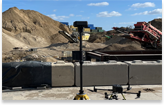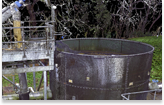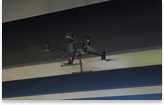Airborn
Aerial LiDAR Survey
Aerial LiDAR is an airborne version of terrestrial laser scanning and because the scanner is in the air it’s able to rapidly scan large or complex areas. It can collect 700,000 points per second with an average surface density of >700 points per square meter.
Here are some example of how aerial LiDAR can be used on your projects:
- Aerial LiDAR can be combined with terrestrial LiDAR to create a complete 3D model of a building or structure. Terrestrial based LiDAR on its own can’t capture all sections of a roof or structure at high elevations.
- Aerial LiDAR is ideal for continuous mapping of long corridors for motorways, railways, powerlines, pipelines and other major infrastructure projects.
- Aerial LiDAR can produce detailed digital terrain models (DTM) and 3D point clouds that cannot always be achieved using traditional surveying techniques or photogrammetry so when surveys are required for terrain covered in vegetation this system is ideal.
LiDAR can penetrate dense tree canopy, enabling the capture bare earth terrain models beneath the vegetation. Many other derived products can be generated including vegetation and assets (powerlines, buildings, infrastructure etc).
We can achieve global accuracies of less than 5cm with point densities up to 700 points per sq m.
The best time to carry out a LiDAR survey is when the vegetation is at its lowest.


Deliverables
LiDAR Survey
Typical deliverables to clients:
- 25cm grid of level as DTM and DSM as point clouds
- Approx. 70 point per metre squared (under vegetation) and 700 in open land
- 2D Orthomosaic
- Global accuracies of approx. 50mm
- Data tied to the OS grid, we supply our own ground control








